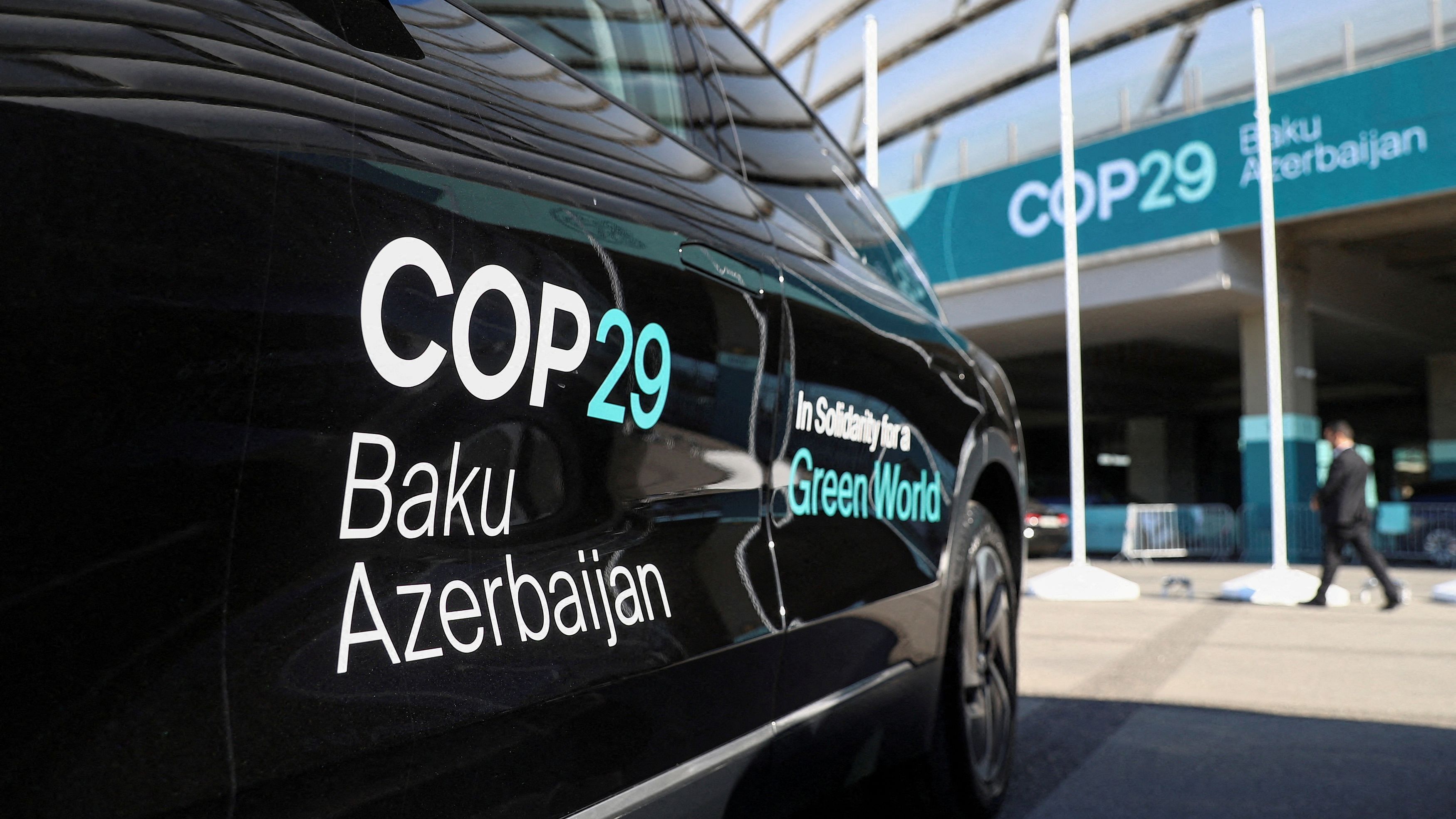
A car is parked at the venue of the United Nations climate change conference, known as COP29, during a media tour ahead of the summit beginning in Baku, Azerbaijan.
Credit: Reuters Photo
The impact of climate change is clearer than ever before. In 2023, the global temperature averaged 1.48°C above pre-industrial (1850-1900) levels, the highest ever recorded. One expert at the European Union’s Copernicus Climate Change Service (C3S) lamented that 2023 was “an exceptional year” with climate records “tumbling like dominoes.” She further observed that temperatures that year “likely exceed those of any period in at least the last 100,000 years.” Record greenhouse gas emissions, assisted by the return of the natural climate phenomenon El Niño, were the primary causes of the unprecedented warming in 2023. In all, 36.8 billion tonnes of CO2 were emitted from fossil fuels last year. Combined with emissions from land-use change, total global CO2 emissions for the whole year were estimated at 40.9 billion tonnes, a historic high.
Extreme weather events such as heatwaves, tropical cyclones, floods, and wildfires are deemed to be the day-to-day face of climate change, and they have occurred with increasing frequency and intensity throughout 2023. This year, summer temperature records have already been broken in many parts of the world. For example, New Delhi recorded its highest-ever temperature of 49.1°C on May 29. The previous high was 48.4°C in May 1998.
Experts argue that the worst ravages of global warming and climate change can be avoided if global average temperature stabilises at well below 2°C or ideally at 1.5°C above pre-industrial levels by the end of this century. These warming limits have since been codified in the landmark Paris Agreement, a product of COP15. The pathway for achieving this, experts contend, is to reduce global greenhouse gas emissions by more than 40% by 2030 and then, reach net zero emissions by the middle of this century. Towards achieving this, countries have prepared their respective national plans, or Nationally Determined Contributions (NDCs), and submitted them to the United Nations Framework Convention for Climate Change (UNFCCC).
NDCs, typically, contain targets for emissions reductions and details on how they will be met. However, recent analysis revealed that even if all the NDCs that have been submitted to the UNFCCC so far are fully implemented, average global temperature will still rise at catastrophic levels of 2.6°C to 3.1°C this century.
COP29 to the rescue?
The window of opportunity for achieving the Paris Agreement’s target of stabilising global temperature to 1.5°C or at least to well below 2°C above pre-industrial levels is closing fast. Global temperature now averages 1.2°C above pre-industrial levels and is climbing. Scientists projected that the 1.5°C warming threshold could be breached for good at some point in the 2030s and that would push the world into uncharted territory.
COP29 – which opened in Baku, Azerbaijan, on November 11 – presents the best chance to stave off runaway climate change. Fossil fuels will, again, be under the spotlight this year. During last year’s COP28 in Dubai, fossil fuels were for the first time identified and targeted and countries agreed to “transition away” from them. With new or updated NDCs due for submission to UNFCCC in February 2025, fossil fuels will again dominate discussions. It remains to be seen if there is agreement to phase out all fossil fuels.
One of the contentious issues at global climate conferences has always been the responsibility for climate change. Developing countries have argued that the world’s wealthiest nations are disproportionately responsible for global warming. Countries including the US, Canada, Japan, and much of Western Europe account for just 12% of the global population but are responsible for 50% of all the greenhouse gasses released from fossil fuels and industry over the past 170 years (1850-2020).
The Intergovernmental Panel on Climate Change (IPCC) also observed in its Sixth Assessment Report (AR6) in 2022 that Southern Asia, despite its enormous population, accounted for just 4% of the historical cumulative CO2 emissions between 1850 and 2019. The corresponding figure for North America and Europe is 23% and 16%, respectively.
Developed countries have a historical responsibility to do more to combat climate change. Since developing countries are disproportionately affected by climate change, developed countries should provide them with the necessary finances to fund climate action. According to one estimate, about $2.4 trillion will be needed each year by 2030, just for developing countries (excluding China) to bring about the required changes. This scenario is also likely to dominate the discussions in Baku.
(The writer is a former IAS officer and President of Chintan Research
Foundation, an independent think tank)